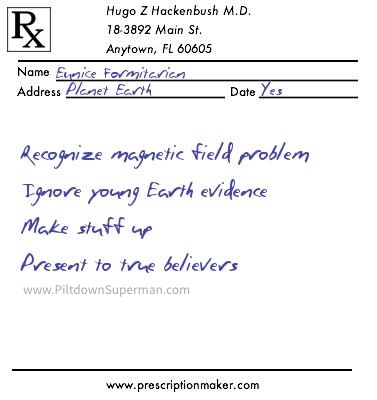Rescuing Earth's Magnetic Field Theory
A major problem for uniformitarian geologists is the decay of the Earth's magnetic field. The thing is decaying at a measurable rate, and if the Earth is as old as they say it is, then way back yonder, the field would have been impossibly strong, and they've known this problem for years. So, they theory is sick and needs to be fixed up right quick so they don't have to admit that the evidence shows a recently-created world. I recommend that you read the excellent article, "Earth's Young Magnetic Field".
Secular geologists know full well that they need the Earth to appear old because evolution requires long ages. Can't admit that our planet isn't so old after all. A rescuing device was presented that needs work, and has some amazingly bad flaws.
Secular geologists know full well that they need the Earth to appear old because evolution requires long ages. Can't admit that our planet isn't so old after all. A rescuing device was presented that needs work, and has some amazingly bad flaws.
A new theory to maintain Earth’s magnetic field looks like a case of special pleading to rescue a dogma.To read the rest, click on "Earth’s Geodynamo: An Energy Crisis".
Keeping Earth’s magnetic field going for billions of years is a major problem, because its strength is steadily decaying. Geophysicists know this but rarely mention it, because they already “know” in their hearts that the earth is billions of years old. A new paper by Caltech scientists O’Rourke and Stevenson appeared in Nature trying to patch up the age problem with what looks like an ad hoc theory rescue device. It involves adding magnesium at the core-mantle boundary so that it precipitates into the core.
Bruce Buffett explains this new idea in his summary, “Another energy source for the geodynamo,” also in Nature. The details of the new theory are not as interesting as the admissions in both articles about how inadequate the received wisdom is.
